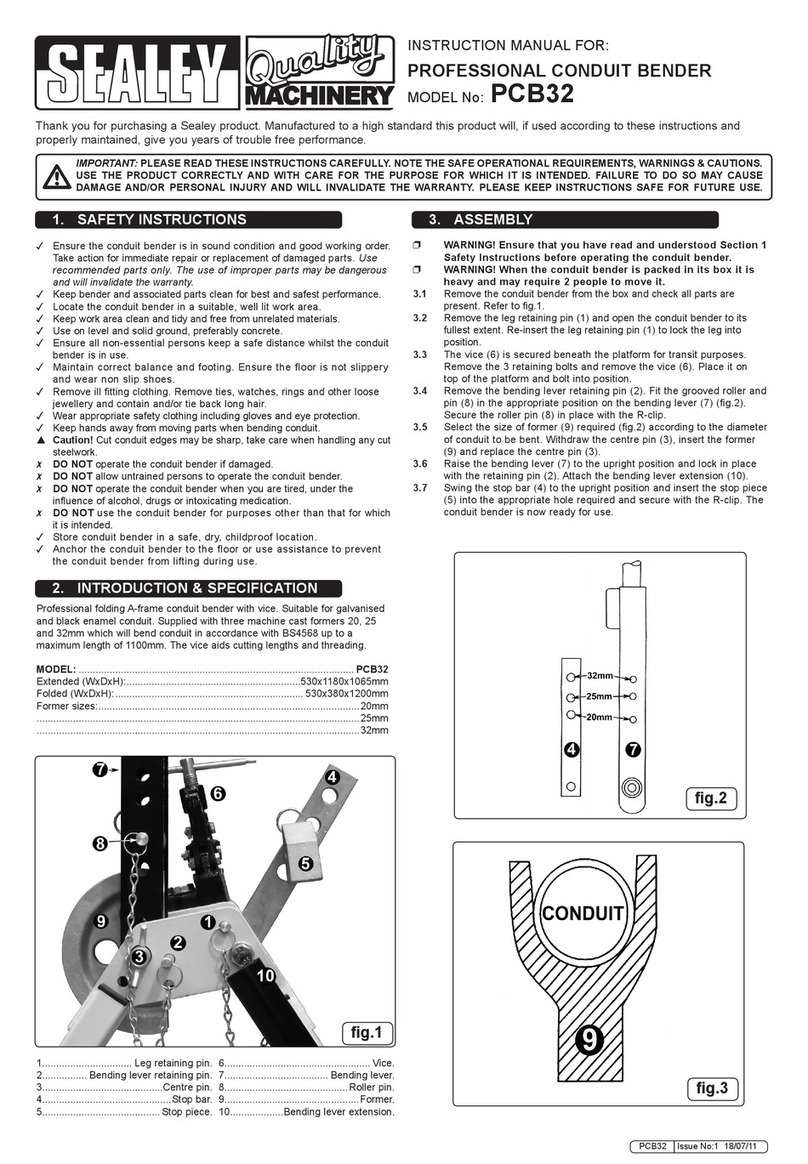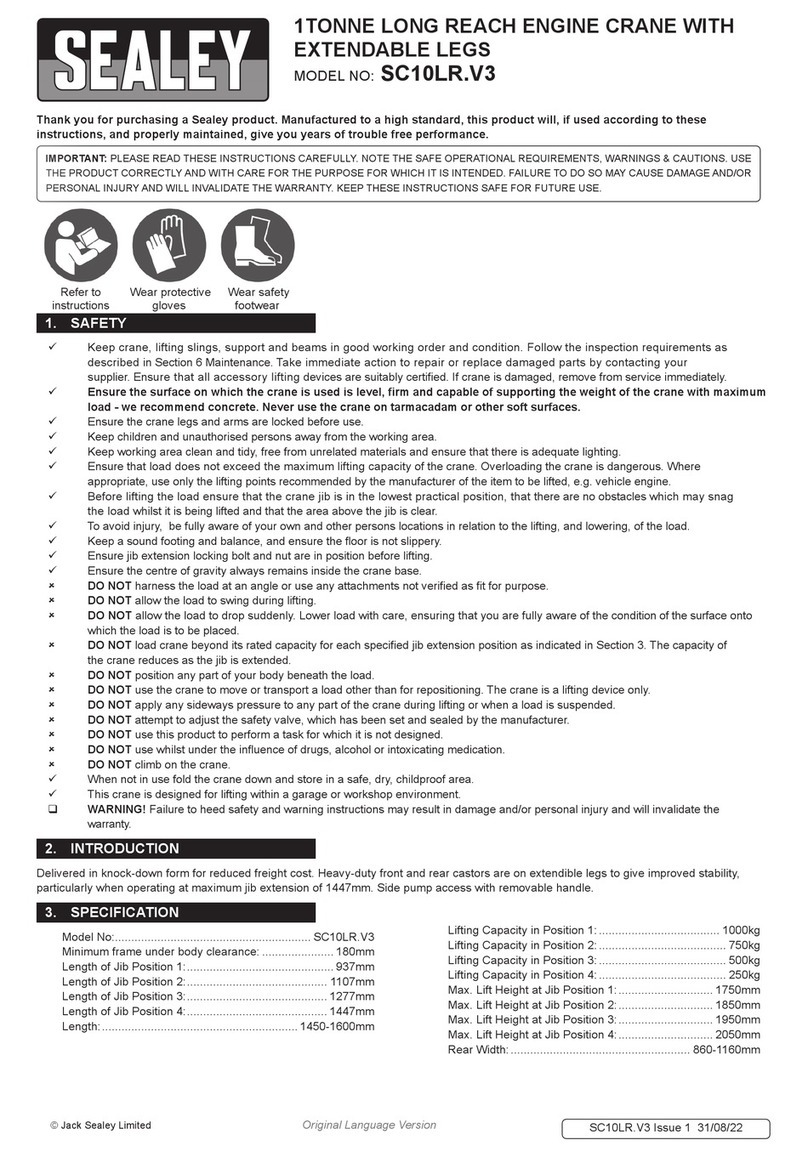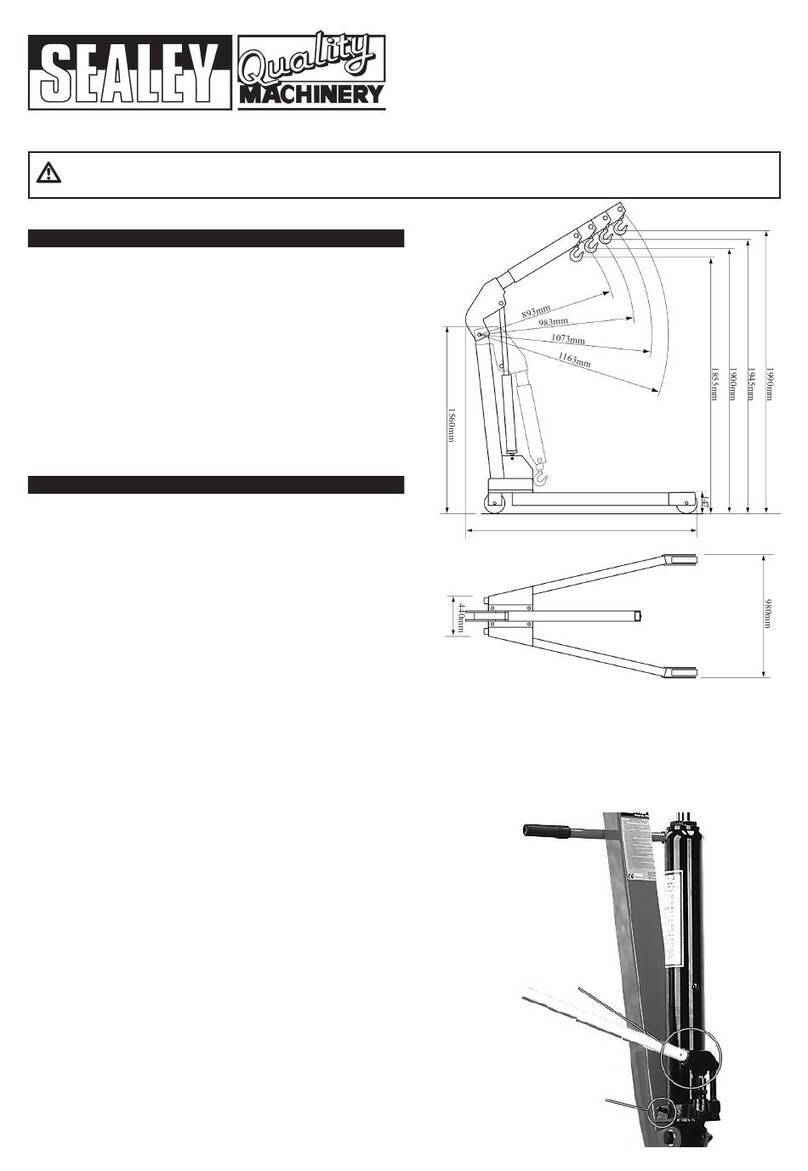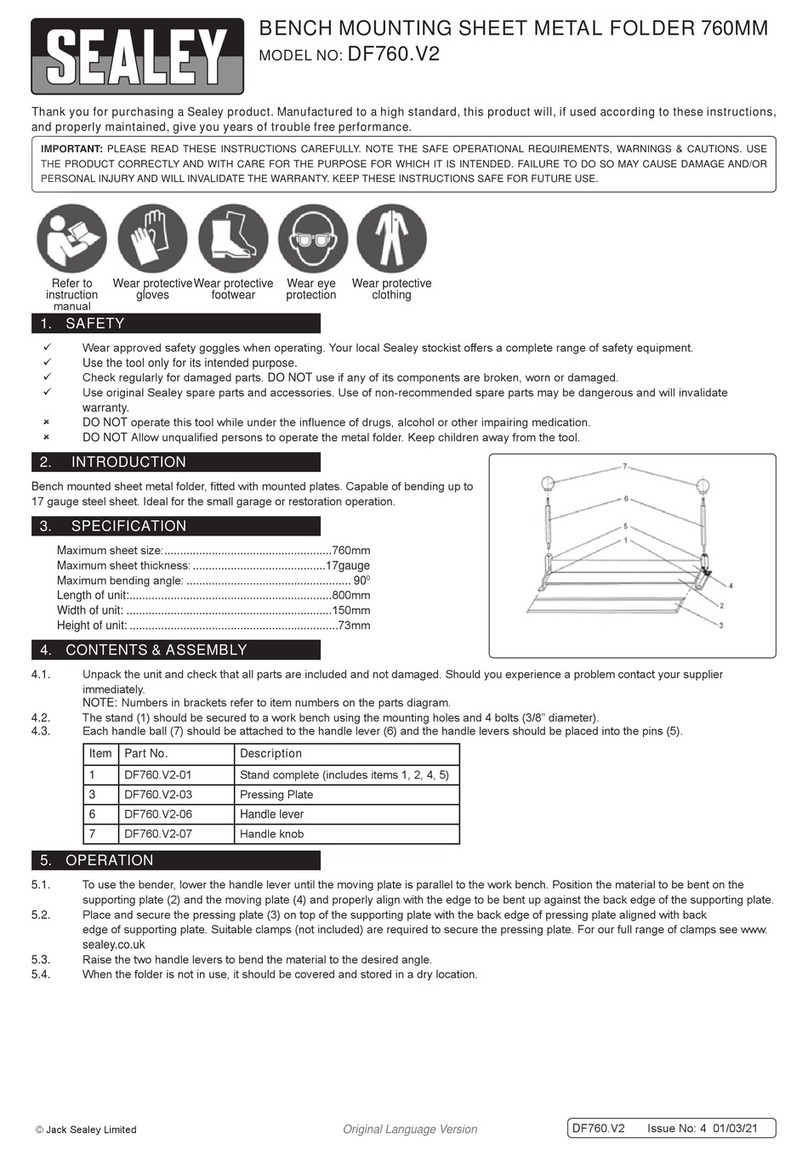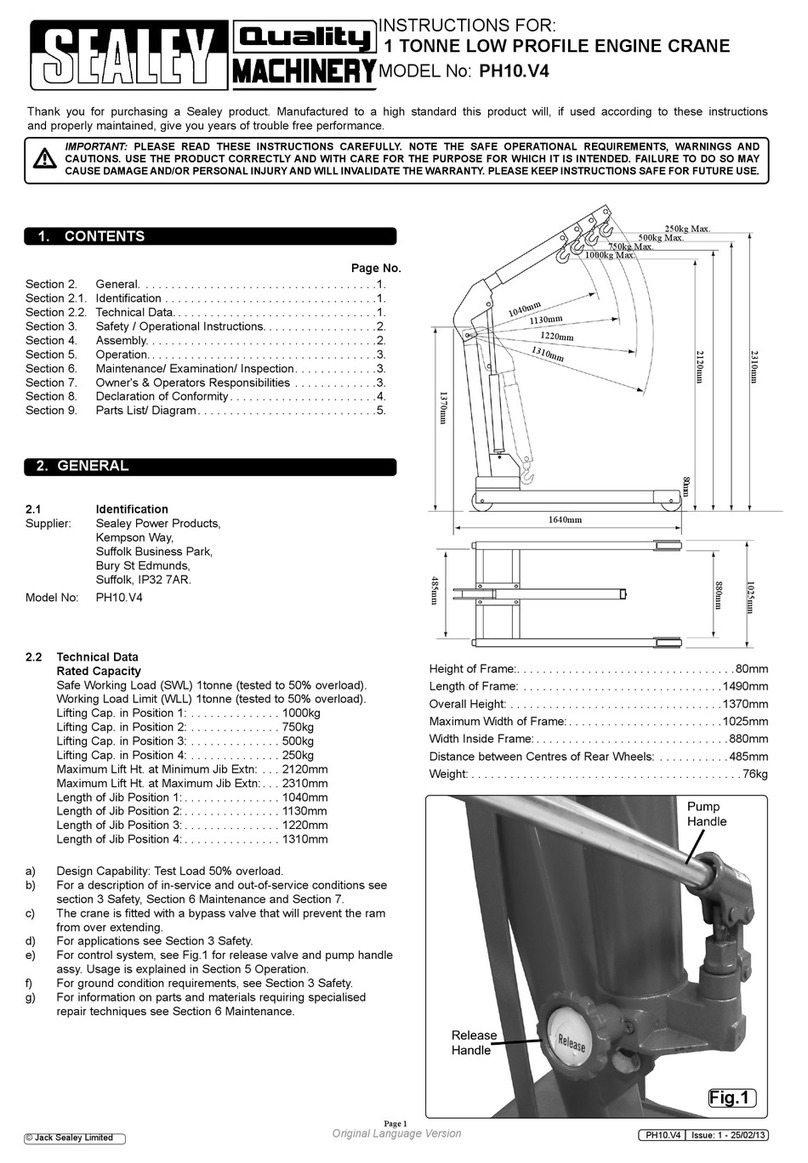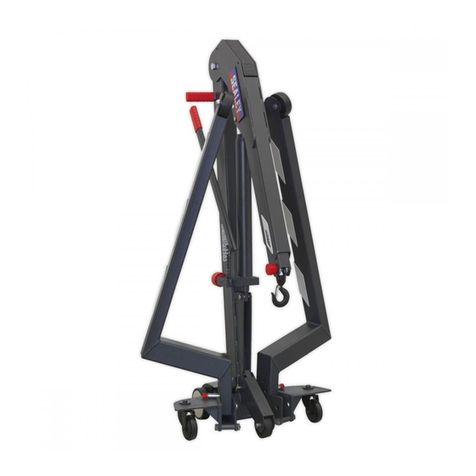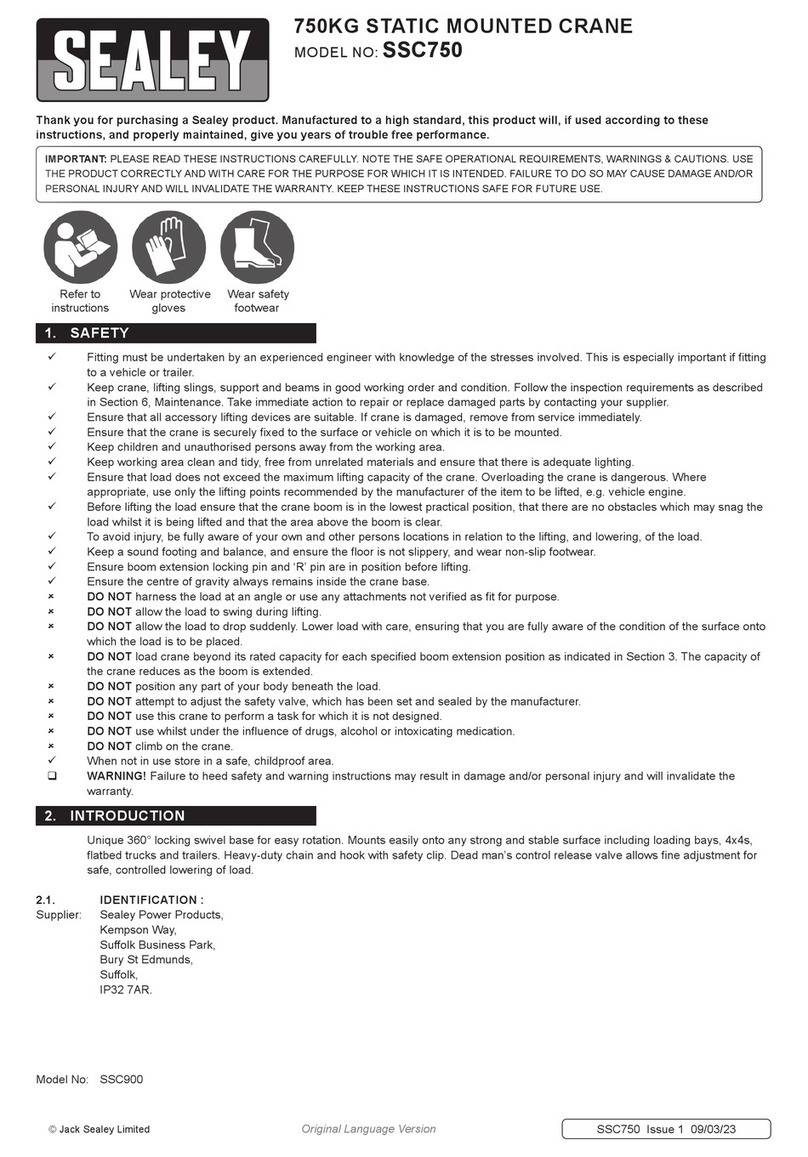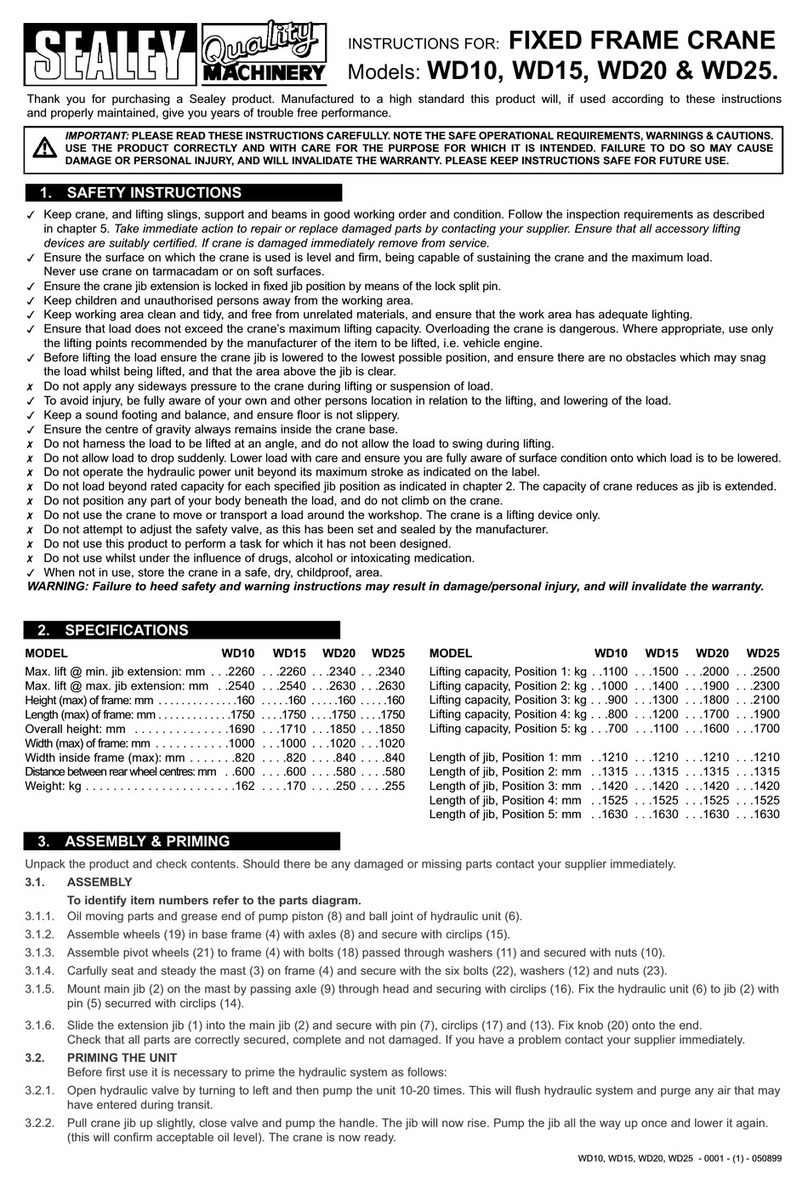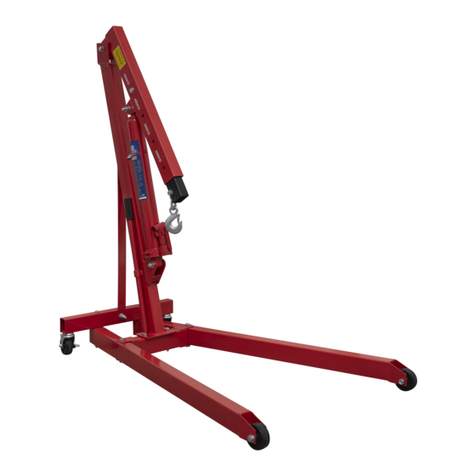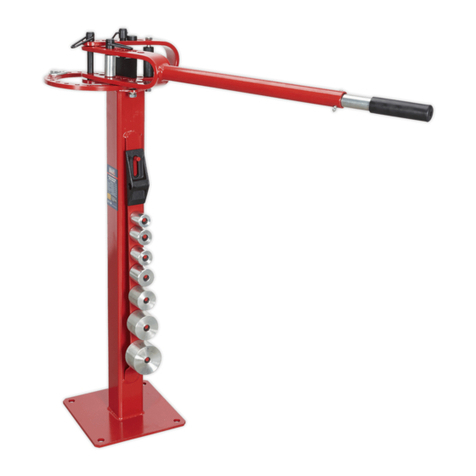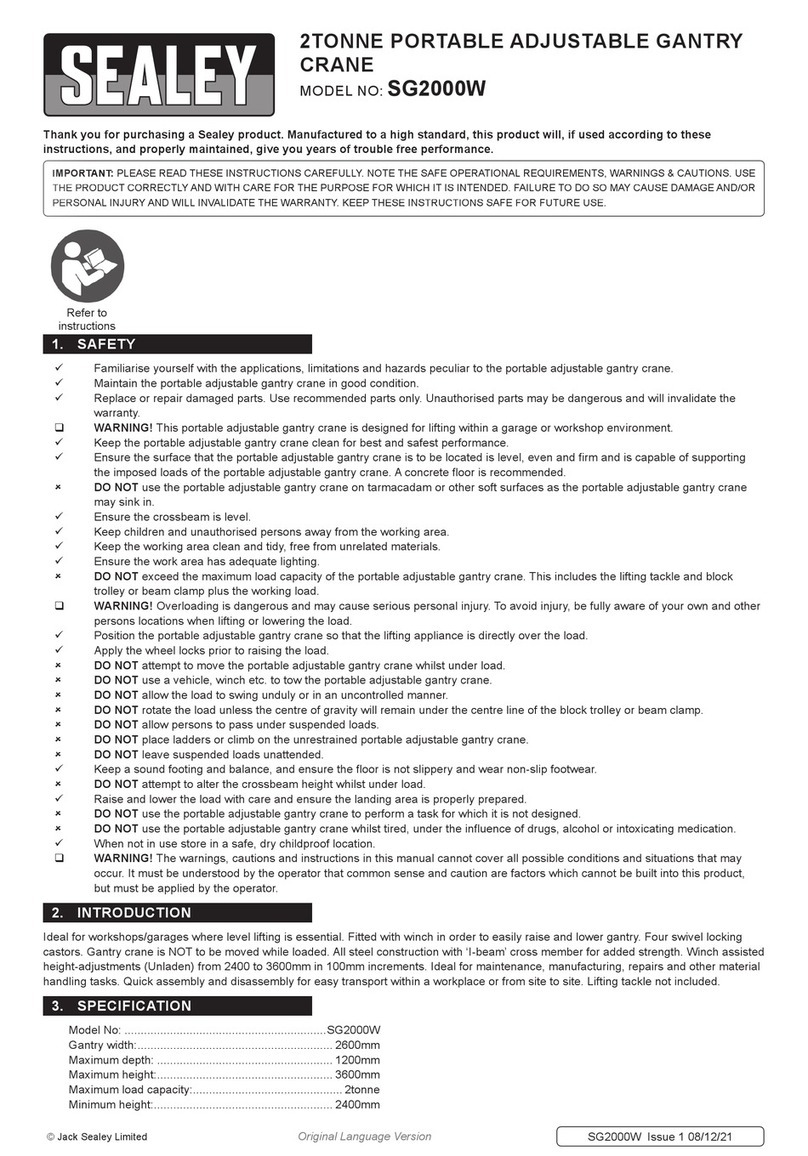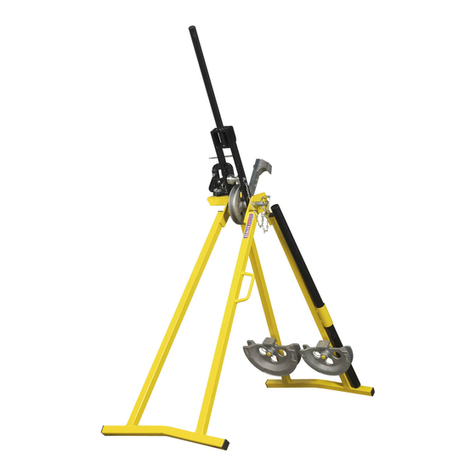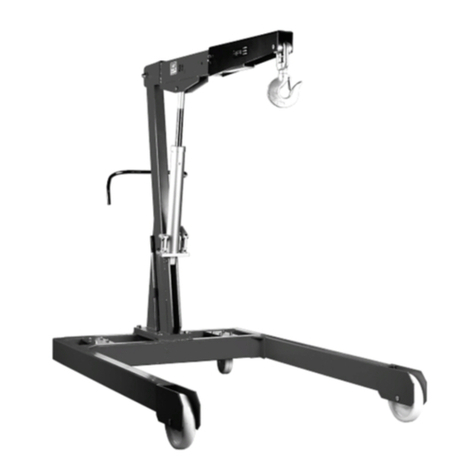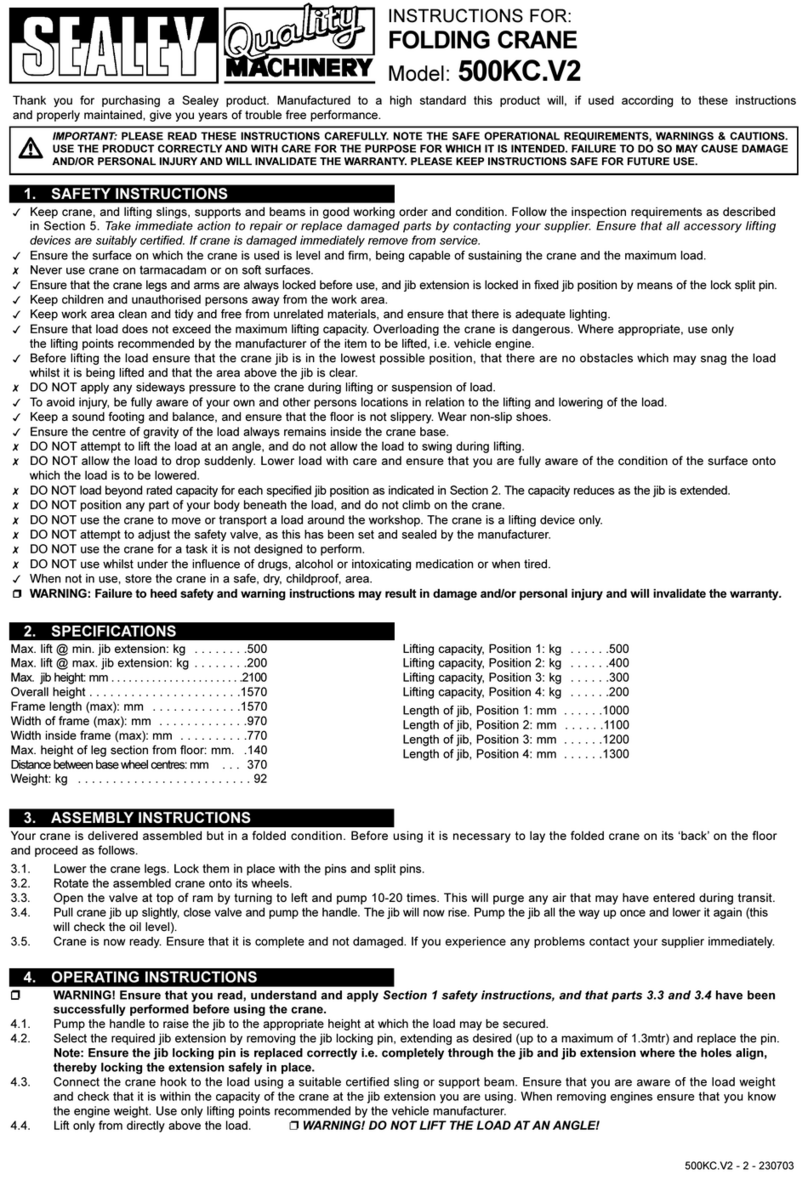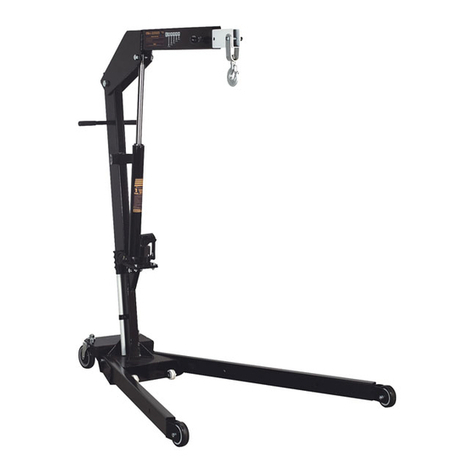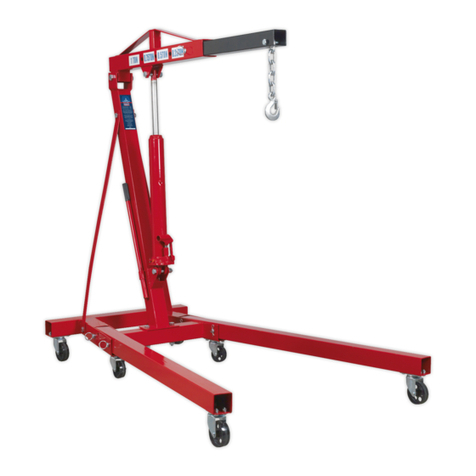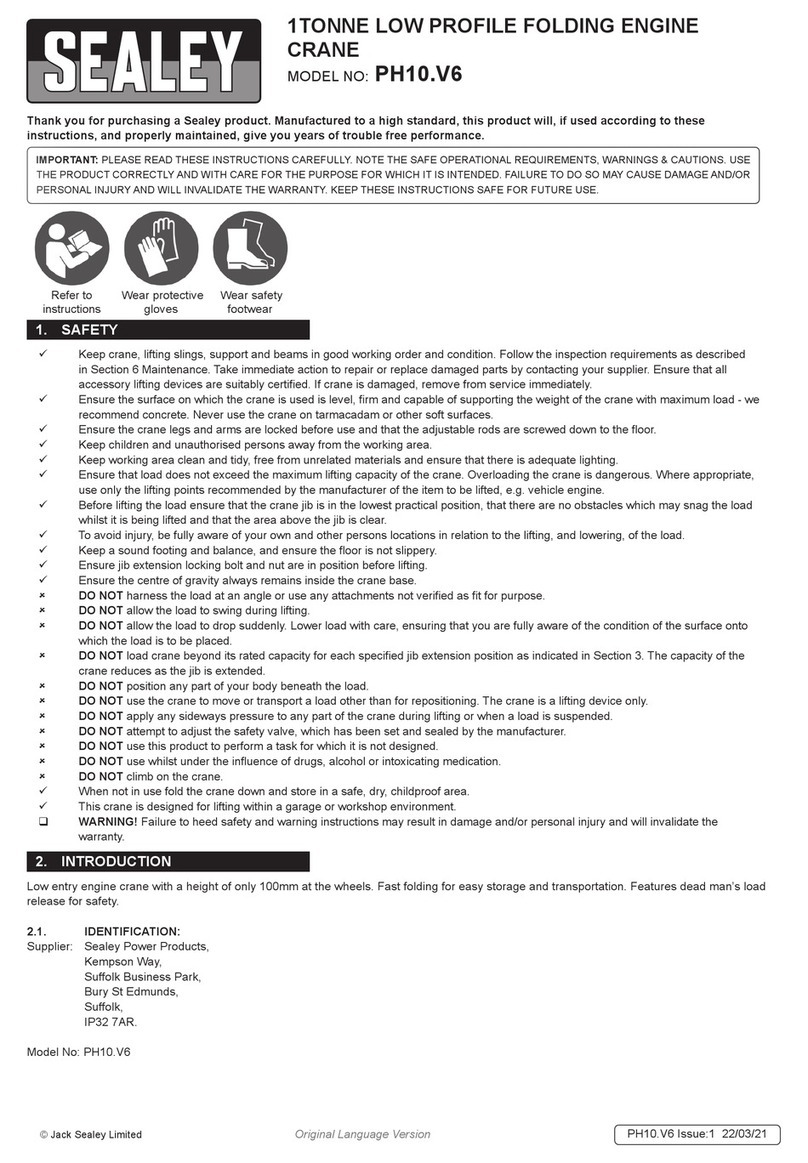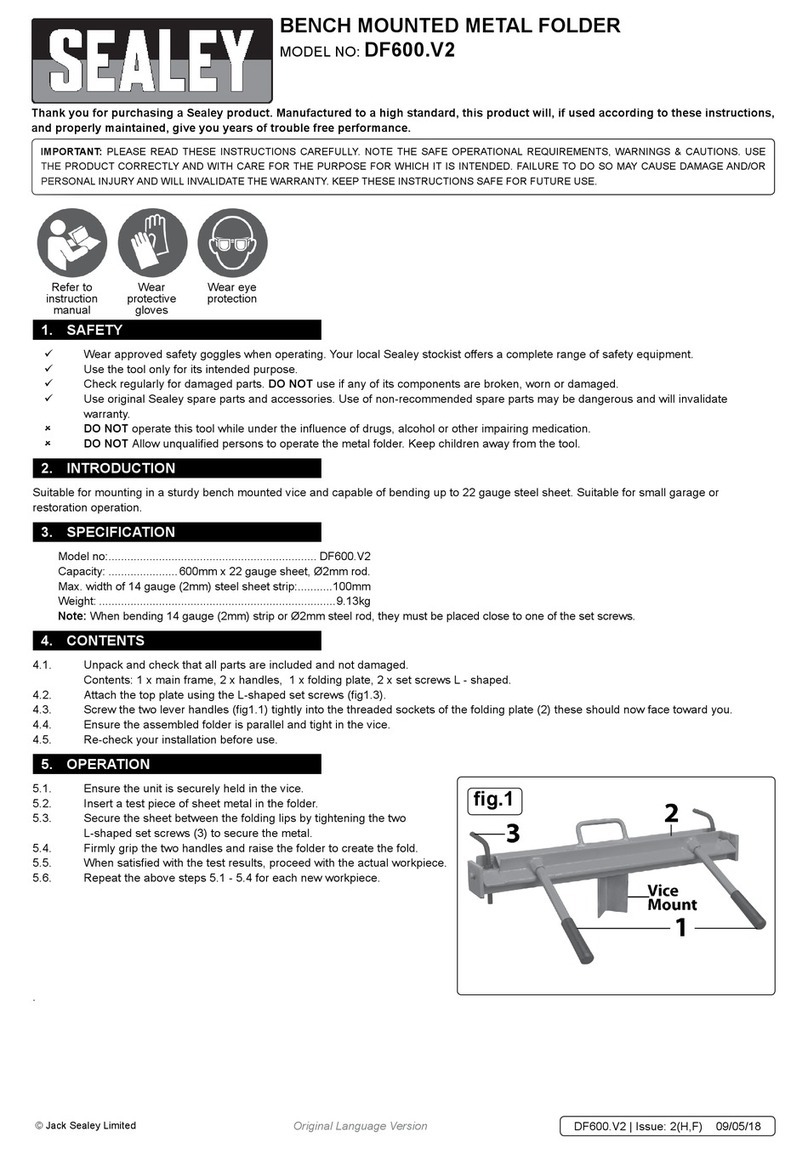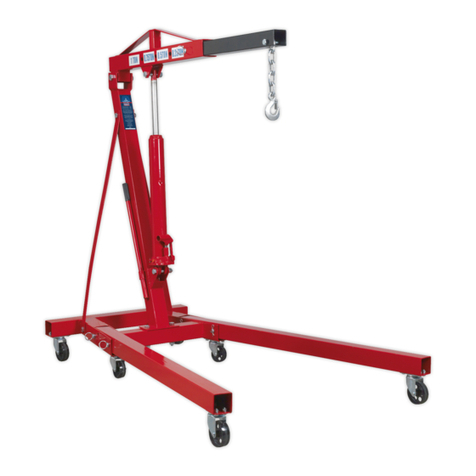
INSTRUCTIONS FOR:
HYDRAULIC PIPE BENDERS 12 & 16TON
MODEL No's: PBS99/10.V3, PBS99/14.V3
Thank you for purchasing a Sealey product. Manufactured to a high standard this product will, if used according to these instructions
and properly maintained, give you years of trouble free performance.
1. SAFETY INSTRUCTIONS
IMPORTANT: PLEASE READ THESE INSTRUCTIONS CAREFULLY. NOTE THE SAFE OPERATIONAL REQUIREMENTS,
WARNINGS AND CAUTIONS. USE THE PRODUCT CORRECTLY AND WITH CARE FOR THE PURPOSE FOR WHICH IT IS
INTENDED. FAILURE TO DO SO MAY CAUSE DAMAGE AND/OR PERSONAL INJURY AND WILL INVALIDATE THE
WARRANTY. PLEASE KEEP INSTRUCTIONS SAFE FOR FUTURE USE.
3. OPERATION & MAINTENANCE
2. INTRODUCTION
üEnsure the pipe bender is in sound condition and good working order. Take action for immediate repair
or replacement of damaged parts. Use recommended parts only. The use of improper parts may be
dangerous and will invalidate the warranty.
üKeep pipe bender and associated parts clean for best and safest performance.
üLocate the pipe bender in a suitable, well lit working area.
üKeep working area clean, tidy and free from unrelated materials.
üUse on level and solid ground, preferably concrete.
üEnsure all non-essential persons keep a safe distance whilst the pipe bender is in use.
üWear appropriate safety apparel, including gloves and eye-shields.
▲Caution! Cut pipe edges may be sharp, take care when handling any cut steelwork.
üCheck that bending die is correctly seated on ram and that the roller shafts are fully engaged in the frame and
pinned before operating hydraulic unit.
üKeep hands away from die and rollers when bending pipe.
üUse a qualified person to lubricate and maintain the hydraulic unit.
üConfirm that the recommended hydraulic oil is used during maintenance.
ûDO NOT top up system with brake fluid. Use hydraulic oil only.
ûDO NOT operate the pipe bender if damaged.
ûDO NOT allow untrained persons to operate the pipe bender.
ûDO NOT exceed the rated capacity of the hydraulic unit (see Section 2).
ûDO NOT use the pipe bender for purposes other than that for which it is intended.
ûDO NOT alter the pressure control valve.
üWhen not in use store pipe bender, with the hydraulic ram in the down position, in a dry, childproof area.
PBS99/10.V3
Floor standing pipe bender with fabricated steel chassis and heavy-duty 12ton hydraulics with integral pump and
reservoir. Fitted with externally mounted return springs. Suitable for bending gas and air pipe from Ø15mm(1/2”) up
to Ø51mm(2”). Supplied with six steel dies to help prevent pipe distortion. Bends up to 180° (3 x 60° bends).
PBS99/14.V3
Floor standing pipe bender with fabricated steel chassis and heavy-duty 16ton hydraulics with integral pump and
reservoir. Fitted with externally mounted return springs. Suitable for bending gas and air pipe from Ø15mm up to
Ø75mm(3”). Supplied with eight steel dies to help prevent pipe distortion. Bends up to 180° (3 x 60° bends).
WARNING! Ensure that you read, understand and apply Section 1 safety instructions before
operating the pipe bender.
3.1 Before rst use, purge the hydraulic circuit, in order to eliminate any air from the system, as follows:
a) Fit jack handle over release valve (g.1.1) and turn anti-clockwise to open valve.
b) Insert jack handle into the handle sleeve (2) and pump several times to ensure full internal lubrication
and to bleed air from the system.
c) When complete place the handle back over the release valve (1) and turn clockwise to close.
When using hydraulic type pipe benders, the bent pipe or tube is prone to deformation on both the
inside and outside curvature.
The pipe or tube can be deformed into an oval shape or creased depending on the wall thickness
of the material. This is not a fault and largely unavoidable.
Consider packing the pipe or tube with dried sand or similar medium before bending as this may
help to alleviate deformation of the pipe or tube. Pack the sand tight and cap both ends.
PBS99/10.V3 & PBS99/14.V3 Issue No. 3 - 07/01/16

